Another summer has come and almost gone here in central Wisconsin. The night temperatures are now regularly dipping into the 40's, signaling the impending arrival of fall. This summer has proved to be challenging, mainly because we've hardly gotten any rainfall! Thankfully, our area is only considered to be "Abnormally Dry," so it could have been much worse.
However, we were still forced to water quite a bit this year, and many of our garden plants did not do as well as we had hoped--most notably the squashy plants, like the pumpkins, butternut, zucchini, and crookneck. These plants are finally setting fruit, but I have my doubts as to whether or not they will reach maturity before it gets frosty.
But what may have saved the rest of the garden was our wash water and other gray water saved from the house. My husband has rigged the washer machine discharge hose up to some large barrels outside; the water is then pumped through a hose and into the garden. I also try to wash produce in a large bowl or tub so that I can save the water to dump on plants. When I use the canner, I let the water cool and save that for the garden as well. Basically, I have been trying to become more conscious of the water I am letting go down the drain and reusing what I can.
If you do decided to make use of your gray water, just keep a few things in mind:
Our garden was able to flourish for the most part thanks to this extra water, and if you'd like to stick around, I can take you on a tour...
Starting on the north side of the garden, we have a long line of sunflowers planted by my husband. This line of flowers makes a nice screen between the road and our garden. We do have some plants on the north side of the main garden (our viney stuff mostly), but for the most part, our garden grows behind the sunflower wall.
Most of these sunflowers are giants that tower well over my head.
All of them, except for one, bears just one giant head. The tallest of the sunflowers, however, was an anomaly--it has many cheery sunflower heads all around.
Directly on the other side of the sunflower wall, we have three large trellises. Growing on these trellises are green and yellow beans and some loofahs. The beans have been great producers this year.
By the way, green beans can provide hours of entertainment.
The loofahs are sloooow growing. This is my second year attempting them. Last year, I did not get a single loofah. This year, I have one, and several more hopefully forming. Will they mature before the first frost though?
Further down the line, we have our Beefsteak tomatoes. In addition to the Beefsteak, we also grew Romas, Yellow Pear, and (I think) Delicious this year. We mostly just can our tomatoes, making ketchup, barbeque sauce, spaghetti sauce, and salsa; we are not fond of eating raw tomato. They have been producing wonderfully--I cannot tell you how many five-gallon buckets full of 'maters my husband and sons have processed; it's a lot. I'm pretty sure the tomatoes love us, why else would they produce so abundantly, and even grow into sweet shapes for us?
Past the tomatoes, we have some herbs, including milk thistle, peppermint, lavender, and calendula. Calendula has always done well in my garden, paying no mind to overly wet summers or even drought conditions. Plus, I can make lots of Calendula Salve with them!
And then we have some cosmos, which I planted to attract birds. The goldfinches absolutely love all the cosmos and sunflowers in the garden.
Our corn has not minded the drought either. We have already canned around ten pints of corn, and there is plenty more ready to be harvested.
We've got potatoes interplanted with the corn. They are about ready to be dug up. I am not sure how they will have fared with the drought conditions, but I'm hoping we watered enough to keep them healthy.
We also have several bell pepper plants that haven't done a whole lot this year. Out of 4 or 5 plants (I can't remember exactly), we have only gotten two peppers so far this year. There are more blooms, but I haven't seen any fruiting.
Moving past the peppers, you will come to a carrot patch, which has produced beautifully. The dirt here has been well worked over the years, and well amended with compost, providing us with big, fat, straight carrots...for the most part. Every once in a while, a carrot has to express itself though.
Near our cucumbers and lemon cucumbers, we have acorn squash and a mystery squash of some sort; my son brought home some plants he started in summer school. One of them is clearly acorn squash:
But the other, I am not sure of yet. It has large blossoms, and yesterday, I noticed a long, thin yellow fruit growing from a blossom end.
Moving further south in the garden, we have our birdhouse gourds growing all along an arched trellis my husband made. I absolutely love this plant. It is one of the few viney plants that has soft leaves--no prickles to make your skin itchy, and before the gourds form, it produces beautiful white flowers. Once the gourds begin to grow, they look so cool hanging down in the trellis.
Near the birdhouse gourds, I had some surprise volunteers spring up. I am always happy to welcome volunteers in the garden, especially when they're yummy kabocha squash! These squash taste a lot like butternut squash, and can even be used as a pumpkin substitute in pie.
Near the kabocha squash, we have two types of beans going. First, we have black beans, which need to dry out just a bit more, and then they'll be ready for harvest.
And second, we have scarlet runner beans. This is my first time growing this beautiful vine. It spreads rapidly, eagerly growing up a trellis. Later, it produces lots of beautiful red flowers, which attract bees, butterflies, and hummingbirds. And finally, the flowers give way to bean pods, which are edible. Here, you can see my youngest son standing in front of some.
We also have some plants growing outside the main garden, closer to our greenhouse. We have a mini variety of watermelons with at least 4 little round melons growing.
The crookneck are finally getting some fruits on them! Hopefully we'll get a good harvest in before frost hits.
We also planted pumpkins, butternut squash, and zucchini in the same area, but they have done poorly this year. We haven't gotten a single zucchini, and the pumpkins and butternut are just now starting to produce. This is the way it goes when you garden though. Some years, you have so many pumpkins, you don't know what you'll ever do with them all, and others, you're swamped with corn or cucumbers instead. There's always a surprise of some kind waiting for you in your vegetable garden.
However, we were still forced to water quite a bit this year, and many of our garden plants did not do as well as we had hoped--most notably the squashy plants, like the pumpkins, butternut, zucchini, and crookneck. These plants are finally setting fruit, but I have my doubts as to whether or not they will reach maturity before it gets frosty.
But what may have saved the rest of the garden was our wash water and other gray water saved from the house. My husband has rigged the washer machine discharge hose up to some large barrels outside; the water is then pumped through a hose and into the garden. I also try to wash produce in a large bowl or tub so that I can save the water to dump on plants. When I use the canner, I let the water cool and save that for the garden as well. Basically, I have been trying to become more conscious of the water I am letting go down the drain and reusing what I can.
If you do decided to make use of your gray water, just keep a few things in mind:
- Do not use water that is contaminated with fecal matter, such as toilet water or water used to wash cloth diapers.
- Do not use water containing harsh detergents, such as dishwasher detergent, fabric softener, or bleach. I make my own laundry detergent, which is very mild; we also use a small amount of vinegar as a fabric softener. The vinegar is used in such a small amount (just a few tablespoons), that it becomes very diluted and does not harm the plants.
- Avoid storing the gray water for longer than a day--it will get gross and stinky. We normally use the gray water immediately.
Our garden was able to flourish for the most part thanks to this extra water, and if you'd like to stick around, I can take you on a tour...
Starting on the north side of the garden, we have a long line of sunflowers planted by my husband. This line of flowers makes a nice screen between the road and our garden. We do have some plants on the north side of the main garden (our viney stuff mostly), but for the most part, our garden grows behind the sunflower wall.
Most of these sunflowers are giants that tower well over my head.
All of them, except for one, bears just one giant head. The tallest of the sunflowers, however, was an anomaly--it has many cheery sunflower heads all around.
Directly on the other side of the sunflower wall, we have three large trellises. Growing on these trellises are green and yellow beans and some loofahs. The beans have been great producers this year.
By the way, green beans can provide hours of entertainment.
The loofahs are sloooow growing. This is my second year attempting them. Last year, I did not get a single loofah. This year, I have one, and several more hopefully forming. Will they mature before the first frost though?
Further down the line, we have our Beefsteak tomatoes. In addition to the Beefsteak, we also grew Romas, Yellow Pear, and (I think) Delicious this year. We mostly just can our tomatoes, making ketchup, barbeque sauce, spaghetti sauce, and salsa; we are not fond of eating raw tomato. They have been producing wonderfully--I cannot tell you how many five-gallon buckets full of 'maters my husband and sons have processed; it's a lot. I'm pretty sure the tomatoes love us, why else would they produce so abundantly, and even grow into sweet shapes for us?
Past the tomatoes, we have some herbs, including milk thistle, peppermint, lavender, and calendula. Calendula has always done well in my garden, paying no mind to overly wet summers or even drought conditions. Plus, I can make lots of Calendula Salve with them!
And then we have some cosmos, which I planted to attract birds. The goldfinches absolutely love all the cosmos and sunflowers in the garden.
Our corn has not minded the drought either. We have already canned around ten pints of corn, and there is plenty more ready to be harvested.
We've got potatoes interplanted with the corn. They are about ready to be dug up. I am not sure how they will have fared with the drought conditions, but I'm hoping we watered enough to keep them healthy.
We also have several bell pepper plants that haven't done a whole lot this year. Out of 4 or 5 plants (I can't remember exactly), we have only gotten two peppers so far this year. There are more blooms, but I haven't seen any fruiting.
Moving past the peppers, you will come to a carrot patch, which has produced beautifully. The dirt here has been well worked over the years, and well amended with compost, providing us with big, fat, straight carrots...for the most part. Every once in a while, a carrot has to express itself though.
Near our cucumbers and lemon cucumbers, we have acorn squash and a mystery squash of some sort; my son brought home some plants he started in summer school. One of them is clearly acorn squash:
But the other, I am not sure of yet. It has large blossoms, and yesterday, I noticed a long, thin yellow fruit growing from a blossom end.
Moving further south in the garden, we have our birdhouse gourds growing all along an arched trellis my husband made. I absolutely love this plant. It is one of the few viney plants that has soft leaves--no prickles to make your skin itchy, and before the gourds form, it produces beautiful white flowers. Once the gourds begin to grow, they look so cool hanging down in the trellis.
Near the birdhouse gourds, I had some surprise volunteers spring up. I am always happy to welcome volunteers in the garden, especially when they're yummy kabocha squash! These squash taste a lot like butternut squash, and can even be used as a pumpkin substitute in pie.
Near the kabocha squash, we have two types of beans going. First, we have black beans, which need to dry out just a bit more, and then they'll be ready for harvest.
And second, we have scarlet runner beans. This is my first time growing this beautiful vine. It spreads rapidly, eagerly growing up a trellis. Later, it produces lots of beautiful red flowers, which attract bees, butterflies, and hummingbirds. And finally, the flowers give way to bean pods, which are edible. Here, you can see my youngest son standing in front of some.
We also have some plants growing outside the main garden, closer to our greenhouse. We have a mini variety of watermelons with at least 4 little round melons growing.
The crookneck are finally getting some fruits on them! Hopefully we'll get a good harvest in before frost hits.
We also planted pumpkins, butternut squash, and zucchini in the same area, but they have done poorly this year. We haven't gotten a single zucchini, and the pumpkins and butternut are just now starting to produce. This is the way it goes when you garden though. Some years, you have so many pumpkins, you don't know what you'll ever do with them all, and others, you're swamped with corn or cucumbers instead. There's always a surprise of some kind waiting for you in your vegetable garden.










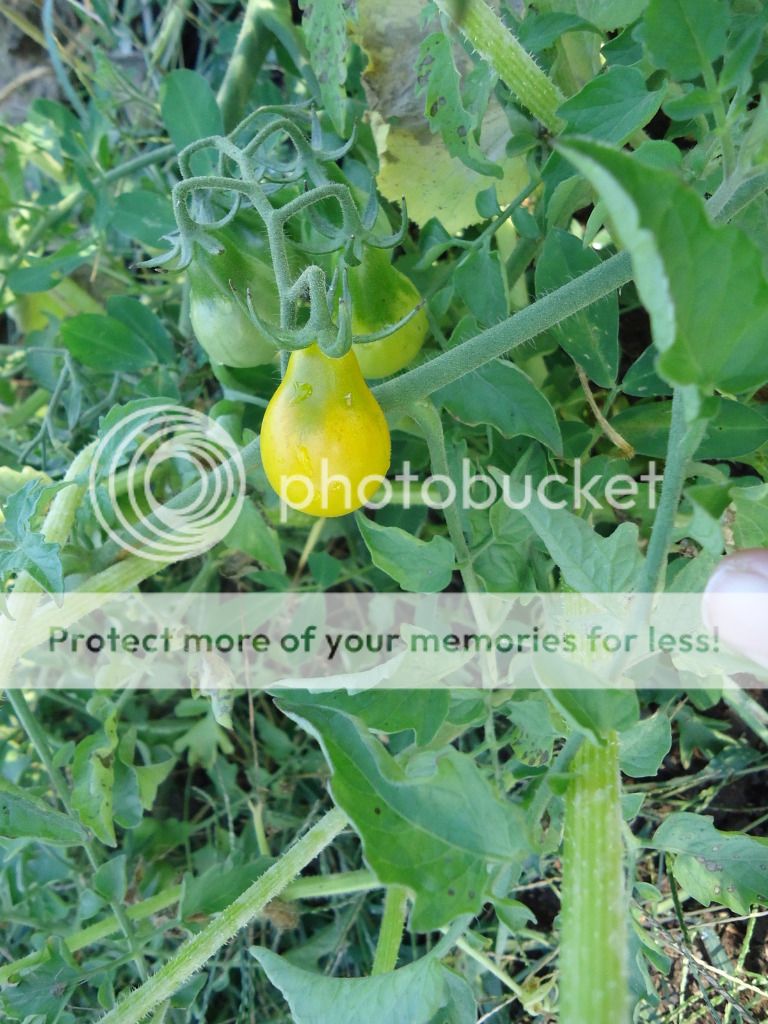


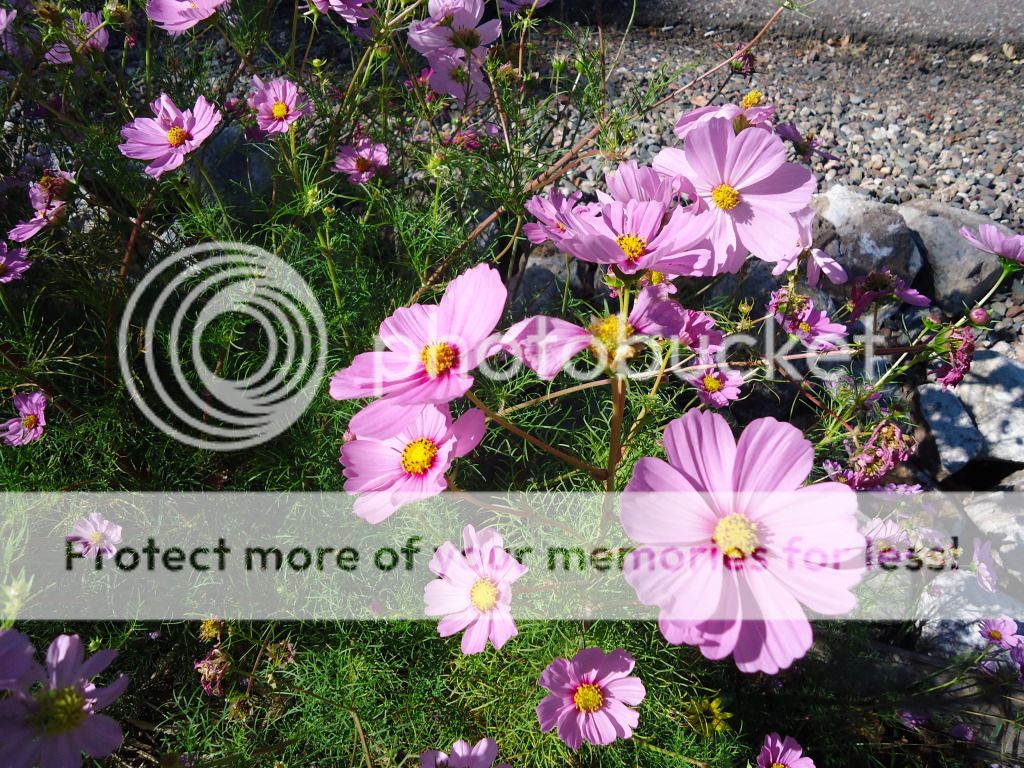



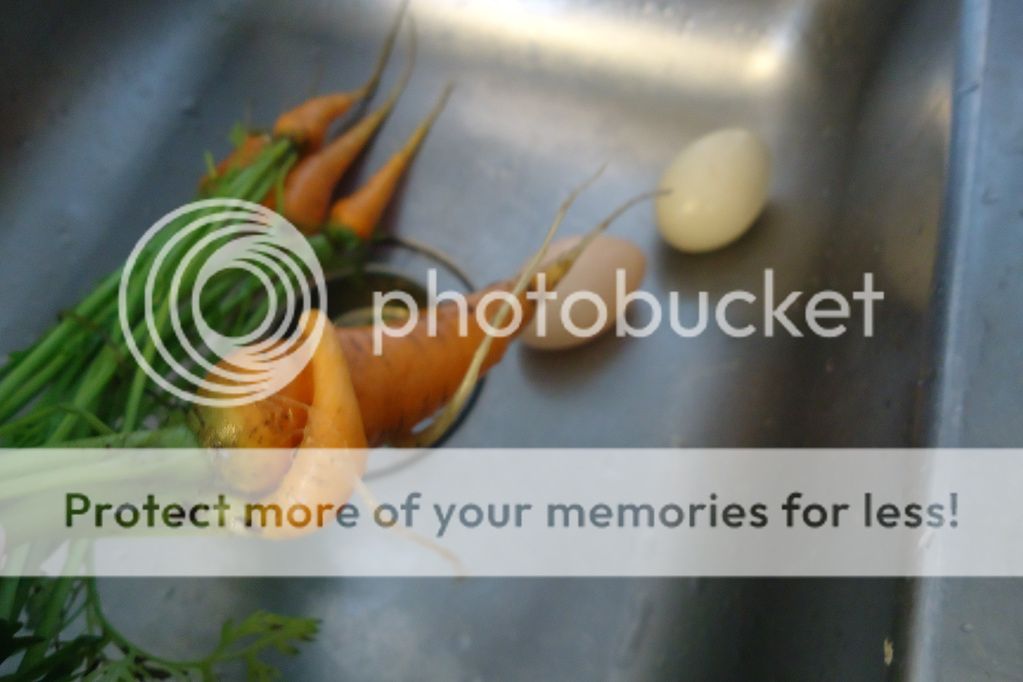
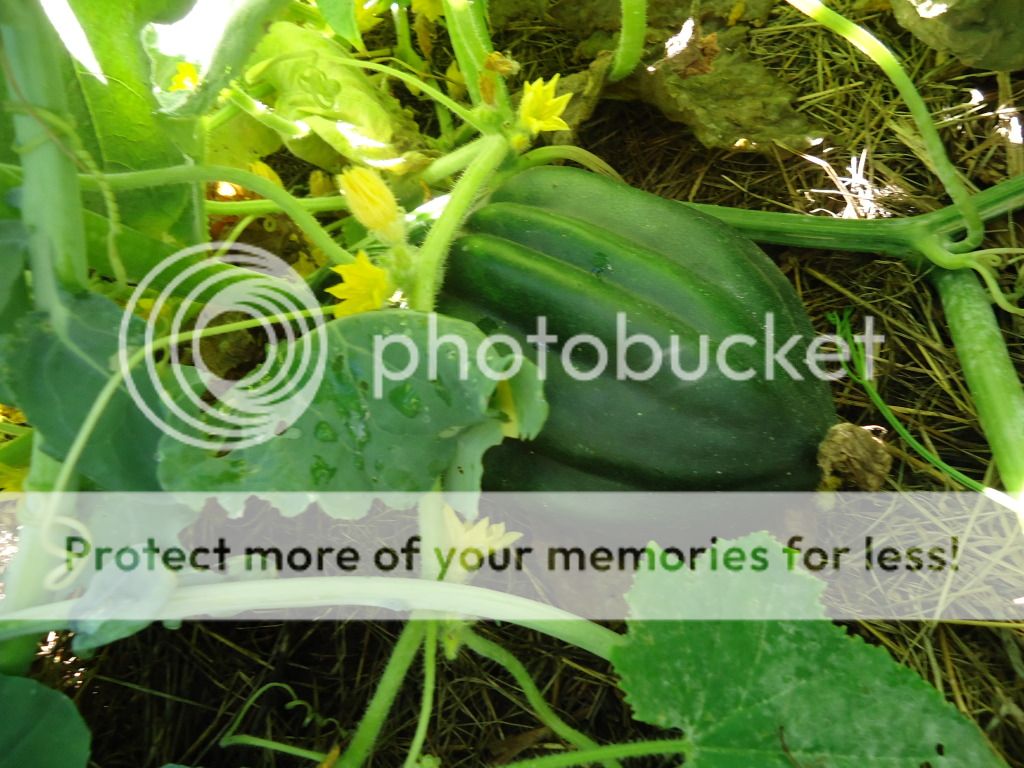



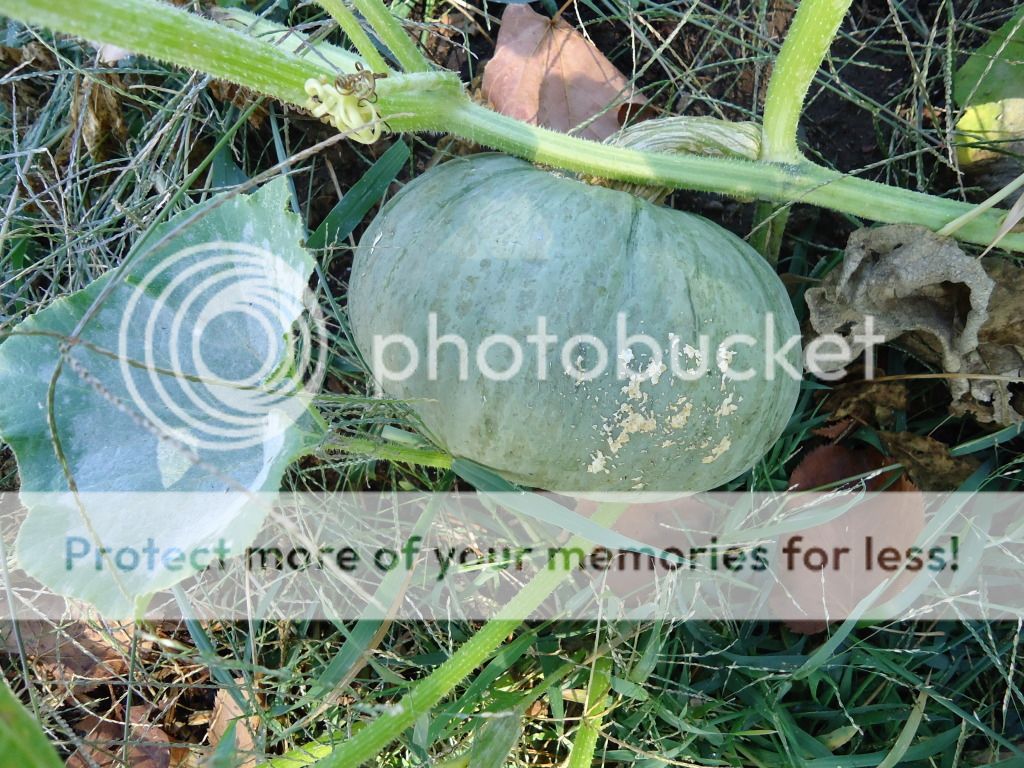



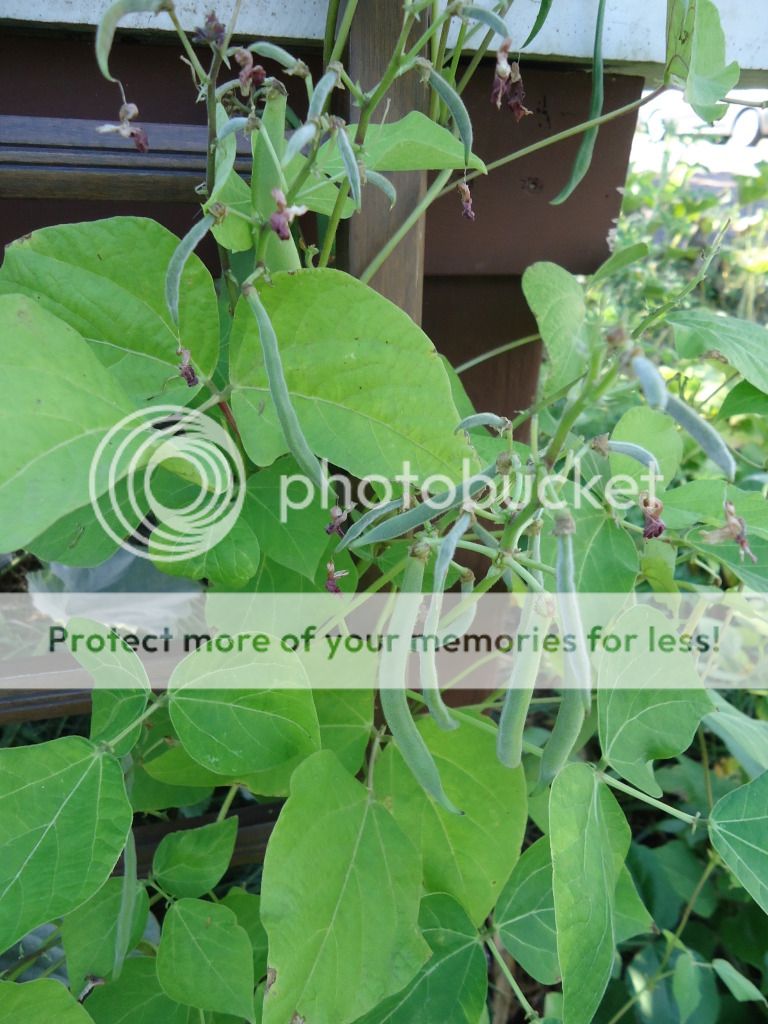



Comments
Post a Comment
I will just take a quick peek at your comment before it posts to avoid getting bombarded by spam. Please don't take it personally, I'm sure you're a lovely person.